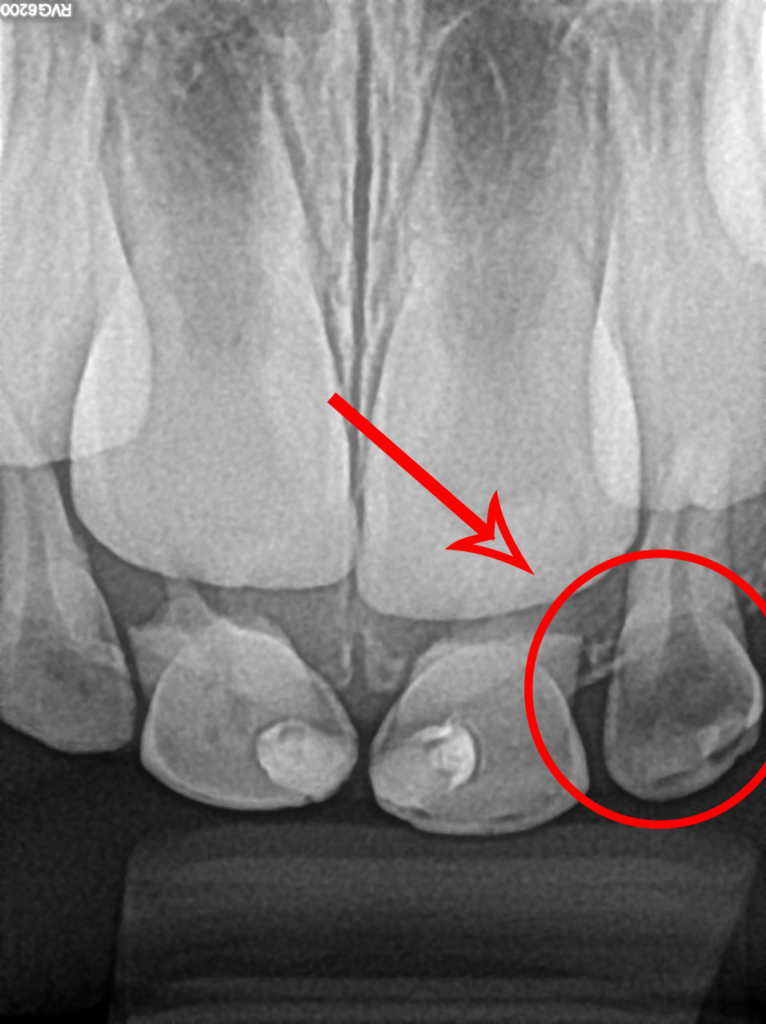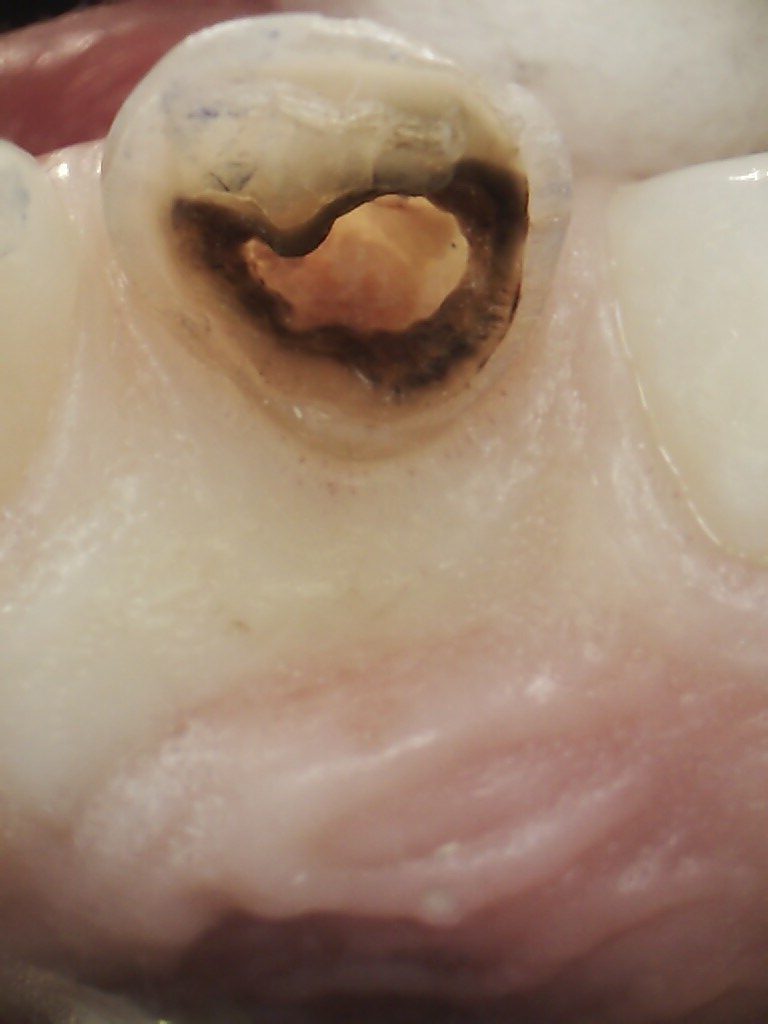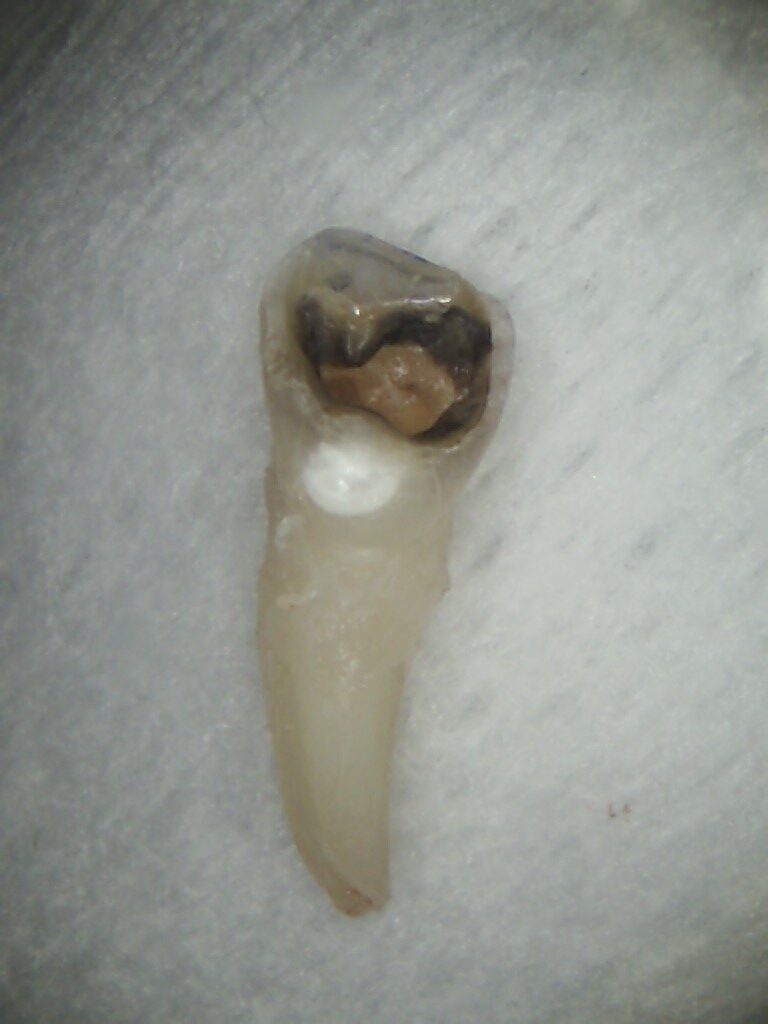
When it comes to cavities, most people associate them with back molars due to the grooves and crevices that make them susceptible to decay. However, it’s essential to remember that front teeth are not immune to cavities either, especially in young children. Maintaining proper oral hygiene and understanding the causes, treatment, and prevention of front tooth cavities are crucial for both cosmetic and oral health reasons. This article takes an in-depth look at cavities on front teeth, including what they are, how to spot them (with pictures), treatment options, and ways to prevent them.
What Causes a Front Tooth Cavity?
You can absolutely get a cavity on your front teeth, similar to those in other parts of the mouth. They are much less likely to happen because they are easier to clean but not impossible. This is especially the case closer to the gumlines or in between teeth.
When sugary food and drink, combined with food particles, get stuck between the teeth, they produce an optimal environment for bacteria to grow. This bacteria, which feeds on sugar, produce acids as a bioproduct which can chew into the hard enamel layer of teeth. Over time, this can create a cavity. Although this is usually easily preventable, neglecting regular brushing and flossing can allow plaque to accumulate, leading to this issue.
Children are particularly susceptible to front tooth cavities due to their dietary habits and oral care practices, namely:
- Baby-bottle tooth decay (BBTD): When parents allow infants to fall asleep with a bottle containing milk, juice, or other sugary liquids, this can lead to tooth decay, including cavities on front teeth.
- Frequent consumption of sugary drinks: Drinking sugary drinks from a bottle or sippy cup throughout the day increases the risk of cavities in children.
- Sharing drinks: Although many parents see no harm in sharing drinks with their children, this increases the risk of cavities on front teeth. Sharing drinks means sharing spit. Sharing spit means sharing bacteria which can potentially be different from person to person.
- Inadequate oral hygiene: Kids often forget to brush or floss, leaving their teeth vulnerable to decay.
Despite children’s teeth eventually falling out, front tooth cavities can still cause significant damage to a child’s oral health. If a tooth falls out prematurely, it can negatively affect the alignment of other teeth, leading to more complex issues such as improper growth of permanent teeth.
Identifying and Treating Front Tooth Cavities
Early detection and prompt treatment are crucial for front tooth cavities. Regular dental checkups every six months help identify cavities that may not be immediately noticeable. Dentists have a few ways to diagnose and treat front tooth cavities, including:
- X-rays: X-raying for cavities can help dentists locate cavities between the teeth that aren’t noticeable upon visual inspection. They provide a detailed view of the teeth, bones, and surrounding structures, allowing dentists to identify cavities, assess their severity, and plan appropriate treatment.
- Transillumination: Using a light source and a probe, dentists can detect cavities on the surface of front teeth. During transillumination, a light source is directed toward the tooth or area being examined. The light passes through the tooth structure, and the dentist observes the transmitted light to identify any changes or irregularities.
- Visual Inspection: During a dental exam, dentists can also visually inspect the teeth for any signs of cavities. In general, a cavity will look like a discoloration, spot, chipped area, or other irregularity on a tooth.
- Tactile Inspection: Using a dental explorer, dentists can feel for cavities that may be too small to notice with a visual inspection. The dental explorer is used to lightly press on the teeth and feel for any irregularities, such as a hole, sticky feeling, or depression, that could indicate a cavity.
The following is an example of a child’s cavity on tooth number 62 (for Canadians) or G (for Americans), their upper left incisor. This cavity is on the lingual surface of the tooth and has been highlighted in red on the X-Ray picture. The big teeth above it on the X-ray are the adult teeth which have not come into the mouth yet.



For those who don’t have access to a dentist right away, it’s possible to detect front tooth cavities at home. Some signs and symptoms to look out for include:
- White or black spots on the teeth (May also just be staining; see cavities vs stains)
- Light brown or gray tooth discoloration (May also just be staining)
- Pain or sensitivity to cold, hot, or sweet stimuli
What Happens if I Have a Cavity on My Front Teeth?
If you have a cavity on your front teeth, depending on the severity of the damage, your dentist may recommend repairing the teeth through one of these procedures (in order from least severe to most severe):
Nothing
If the cavity is very small and has not reached the dentin, your dentist may recommend simply monitoring it for any changes. They will encourage you to continue brushing and flossing regularly and keeping up your oral hygiene in the hopes of remineralizing the area (reversing the cavity).
Filling
If the cavity has reached the dentin but is not yet at the pulp, your dentist will likely recommend a filling. A filling is a common procedure in which the dentist removes the decayed portion of the tooth and then fills it in with a material, such as an amalgam, composite resin, or gold. For a full list of dental filling costs, click here.
Root Canal
If the decay has reached the level of the pulp, a root canal will be required. A root canal is a more costly procedure in which the dentist removes the damaged pulp from the tooth. This is done by drilling into the tooth and then removing the pulp with specialized instruments. The tooth is then filled and sealed. For a full list of root canal costs, click here.
Crown
If the decay is severe and a root canal has been performed, a crown may be recommended. A crown is an artificial tooth that covers the entire tooth. It is typically made of porcelain, ceramic, or gold. For a breakdown of dental crown costs, click here.
Extraction
In some cases, the decay may be so severe that the only option is to extract the tooth. This is typically a last resort and is only done when the tooth cannot be saved through any other means. These missing teeth can typically be replaced through dental implants, dentures, or bridges. For a full list of tooth extraction costs, click here.
Preventing Front Tooth Cavities
Prevention is key to maintaining a healthy smile and preventing front tooth cavities. Here are some preventive measures to consider:
- Brushing: Brush your teeth at least twice a day with fluoride toothpaste, paying special attention to the front teeth.
- Flossing: Clean between your teeth once a day using dental floss or interdental cleaners.
- Balanced diet: Limit your intake of foods and drinks with added sugars, as they contribute to tooth decay.
- Regular dental checkups: Visit your dentist every six months for checkups and professional cleanings to detect and address cavities early on.
Conclusion
Front tooth cavities can occur due to various factors, including poor oral hygiene, sugary diets, and inadequate dental care in children. Identifying and treating front tooth cavities promptly is crucial for maintaining oral health and preserving the appearance of your smile. By adopting a comprehensive oral care routine and making smart dietary choices, you can significantly reduce the risk of front tooth cavities and enjoy a healthy mouth throughout your life. Remember, prevention is always better than cure when it comes to dental health.
Disclaimer
The contents of this website, such as text, graphics, images, and other material are for informational purposes only and are not intended to be substituted for professional medical advice, diagnosis, or treatment. Nothing on this website constitutes the practice of medicine, law or any other regulated profession.
No two mouths are the same, and each oral situation is unique. As such, it isn’t possible to give comprehensive advice or diagnose oral conditions based on articles alone. The best way to ensure you’re getting the best dental care possible is to visit a dentist in person for an examination and consultation.
SAVE TIME AND MONEY AT ANY DENTIST

Less dental work is healthier for you. Learn what you can do to minimize the cost of dental procedures and avoid the dentist altogether!

